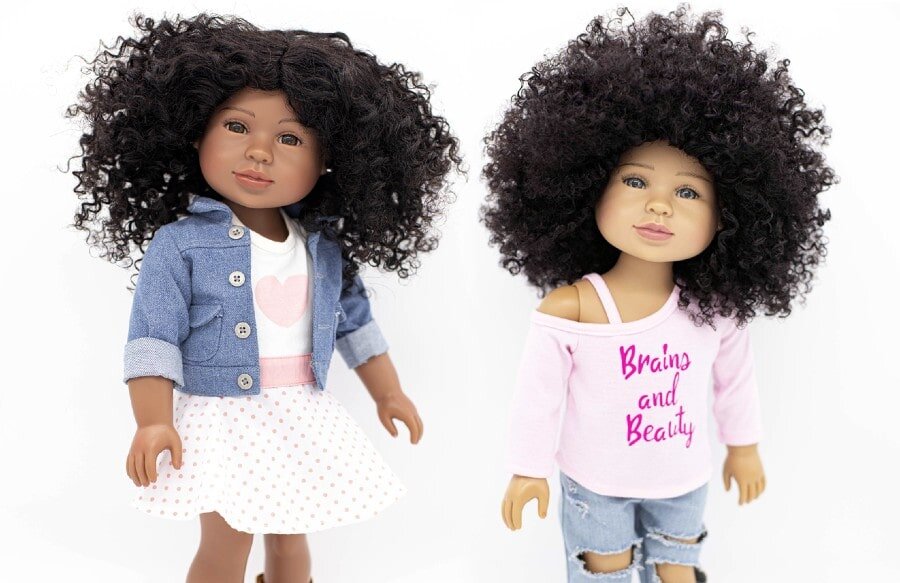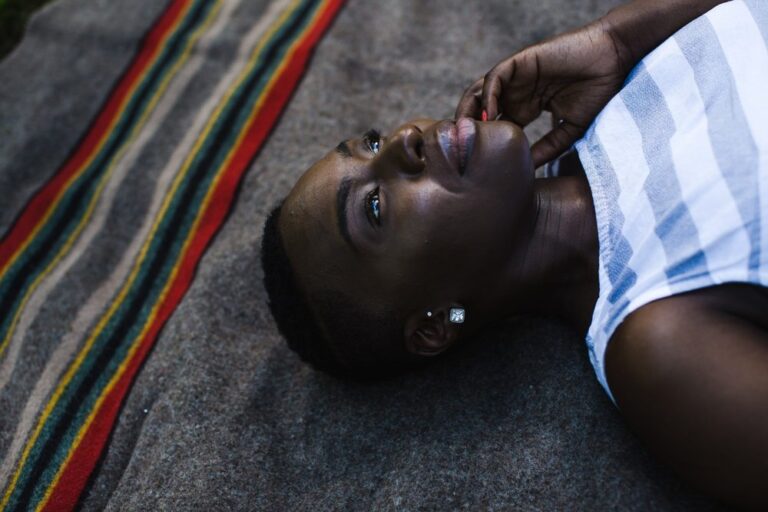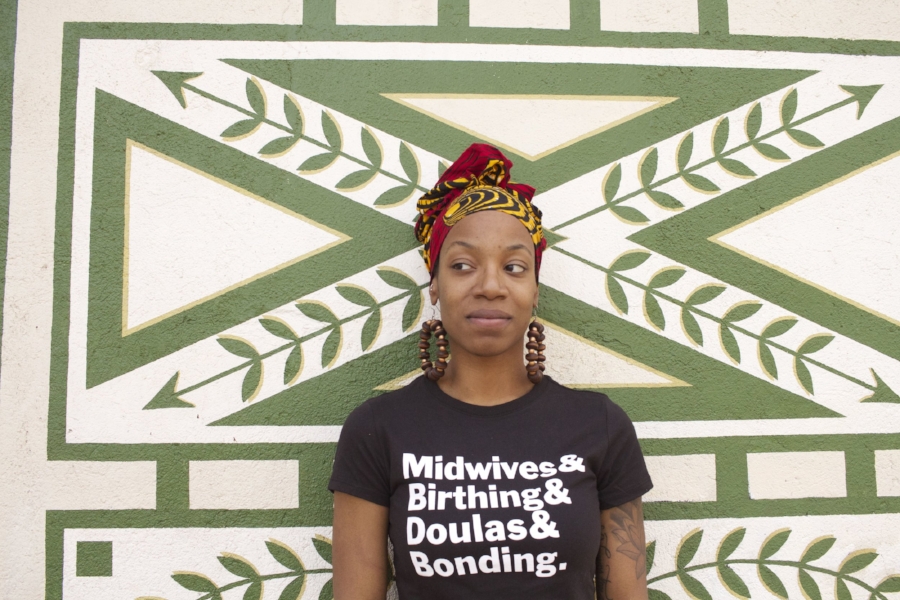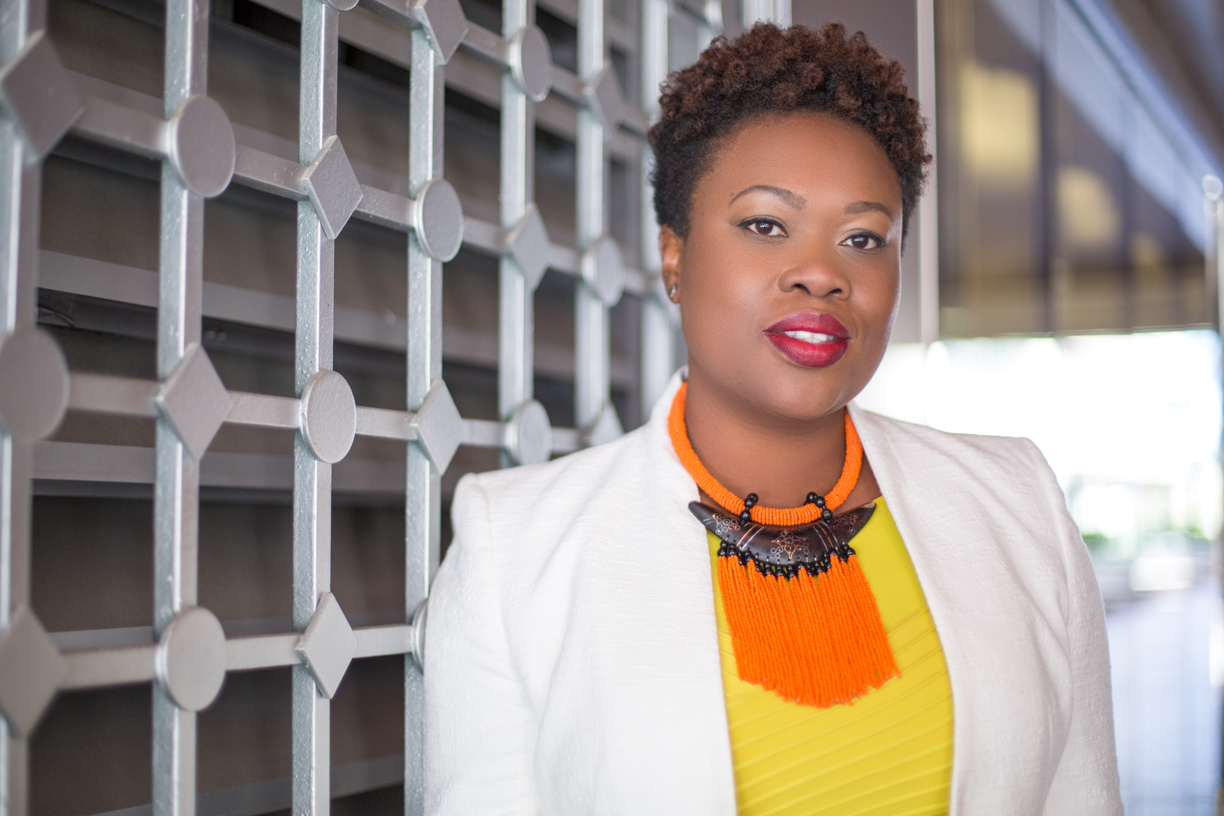In a series called “Black Mom Owned,” mater mea highlights Black mom-owned businesses to support (Team Buy Black), like Brains & Beauty Dolls, a line of Black talking dolls.
Would you like to be featured? Fill out this intake form to be considered.
A doll is never really just a doll: It’s often a plastic landmine that, once tripped, can lead to hard conversations about race, colorism, body image, and more.
It’s a lot for those tiny shoulders to carry—and even more for parents to try to explain to their kids.
That’s why many moms make an effort to only buy Black dolls. We know the results of “The Doll Test”: white dolls can reinforce messages of self-hatred in Black and brown children, and children of all races are biased toward lighter skin. (Sadly, a 2010 recreation of the study showed not much has changed… and remember the viral video of Ariyonna, a 4-year-old girl with deep brown skin who broke the Internet’s heart when she said “I’m so ugly”?)
Children that hear positive affirmations and have positive role models tend to thrive…
Niya Dorsey had all of this in mind when she created Brains & Beauty Dolls in 2017. The line of 18” Black talking dolls —Malia (named after her daughter) and Khari—speak more than 20 different empowering phrases, including “You can be whatever you want to be” and “You are strong.”
“I wanted to create each doll with a set of powerful phrases, designed to teach our girls to rise above stigmas and criticism, and to love themselves for who they truly are,” the Sicklerville, New Jersey-based mom of two explains on her website.
“Children that hear positive affirmations and have positive role models tend to thrive in their self-awareness and use that energy to prosper,” she continues. “They are usually confident, strong, and follow their dreams.”
Niya’s following her dreams, too. But, as she explains in an interview with mater mea, it can be hard. Along with juggling the demands of being a mom and wife, she’s also navigating the ups and downs of trying to get her Black talking dolls in households everywhere.
Here Niya talks openly about finding a manufacturer in China, dealing with price-sensitive customers (her Black dolls retail for $90), and staying true to her vision.
The interview was edited for length and clarity.

What was your relationship like with dolls before you started your company?
I had some Barbies. I had a Baby Born. She was a bald-headed brown doll, she would pee-pee and poop when you fed her. I had another brown doll: She was about 18″, she had a heart on her cheek. She was a pretty brown, but she had gold hair.
How did that make you feel as a kid?
Honestly, I can’t remember to even say I felt a way because I had mostly Black dolls. The difference is all the Black dolls’ hair was straight. It was never thick and kinky like mine. (Laughs) I guess I can say I used to be like “Ma, can you straighten my hair so it can be nice like that?”
How did your daughter inspire your company?
It was between her and God. My daughter was only 1 month old. Prior to that, I actually wanted to have my own clothing line. I never really thought about dolls.
I was playing with her, and at that moment I thought, “We need to create a doll.”
I picked up the phone and called my aunt. “Listen: What would you think if I created a doll that represents our girls of color, but made it as realistic as possible?”
You have dolls with brown skin, but their features are not too much like ours.
She said, “You may be on to something. You have dolls with brown skin, but their features are not too much like ours.”
It took some time. I Googled, Googled, Googled and called different people to try and find manufacturers. I ended up finding one: I sent a photo of my daughters’ face—she was about 2-3 months at that time. I gave it to the manufacturer and they were like, “Oh yeah, we can sculpt a doll like this.”
But I also wanted the dolls to have real human hair; a lot of dolls now you can’t style their hair. The manufacturer was like, “Um, excuse me? We don’t have that. People don’t do this.”
So I had to find another manufacturer that had real human hair, and have them coordinate with the doll manufacturer.
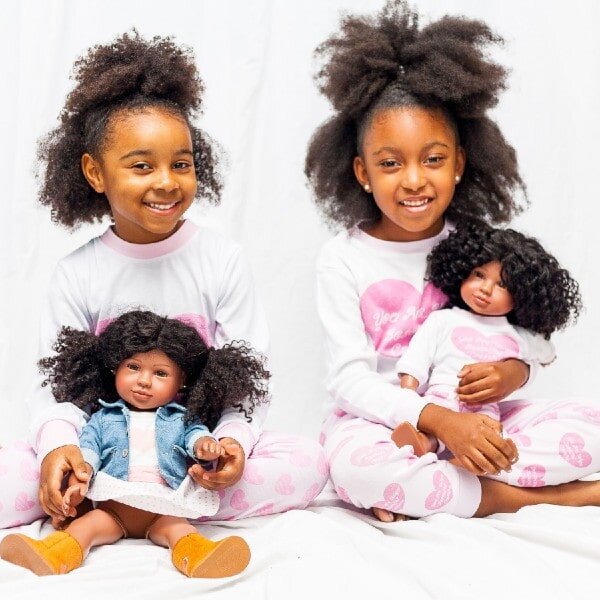
How did you come up with the statements for your Black talking dolls? Were those things you wish you had heard growing up?
I wrote things that I thought were important. I reached out to family, friends, and random people and asked them, “What do you want your daughter to hear? What do you say to your daughter on a daily basis?”
Recently, because of so much going on with these children and their hair, we’re actually talking about switching out some of the phrases and replacing them with phrases related to hair.
How long did the process to make these Black talking dolls take?
From March 2017 to about September 2017. I got really excited right away and did my due diligence. I was up day and night. Then once I found the manufacturer, it took them about three months to do everything.
The biggest process was actually finding them and making sure they were reputable. After that, everything was rolling. Once I got the prototype in September, I did a Kickstarter and got enough preorders to get the first doll out. I think we had about 90 preorders. We raised $20,000; we literally just hit our goal.
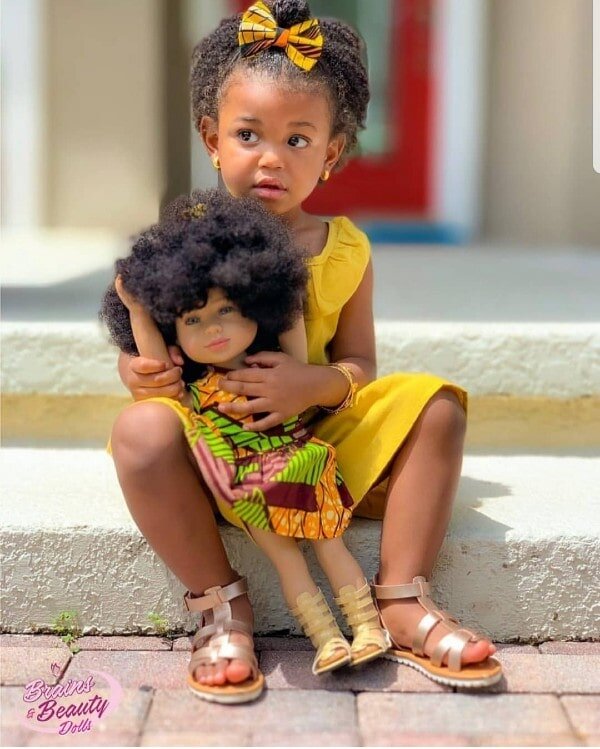
What advice would you give to someone who wants to fund their business through crowdfunding?
It was definitely a struggle. Even though Kickstarter has people who are superbackers, it’s not easy to get them.
My biggest mistake was not doing an awareness campaign about the product, not letting people know that this is what’s coming, doing landing pages, and sending emails. You have to get your audience excited first. You have to let them know. If they’re going to get, and if they’re not there to support you, it may not happen.
I must thank this lady named Debbie Garrett. She’s a blogger. She really loved my idea, even though there was no doll. I sent her a message and we spoke. She’s an awesome person and she has a group of doll collectors. She wrote a little blog about our doll, shared it in her group, and a lot of her friends and followers actually helped with our crowdfunding.
Without her, I wouldn’t have made my goal because I did it all wrong. Nobody knew who we were, and to be honest, a lot of people still don’t know who we are—we have a little over 2,000 followers on Instagram. That’s my goal now: to try to get the world to know, hey, we’re here and we have products that represent you.
What has been the response to your line Black talking dolls?
I get emails from people saying how great this product is and they’re really proud of me. It feels really good. But you also need the sales to go with all those compliments. (Laughs)
I also get emails that say, “You have this great product, and it’s for this type of person, but they can’t afford it.” I get it. Trust me, I definitely get it. But in reality, it costs a lot to make these dolls. And they’re coming from China, so shipping is a whole ‘nother thing on its own.

Do you have a threshold you have to hit to ship your Black talking dolls?
It’s a minimum of 500. It used to be 300, but it’s 500 now. I just released the prototype of Nia*, and I would really like her to be released, but we have to get some preorders for her. We can’t afford to get 500 dolls and then sell her at events.
(* Niya had to cancel the release of Nia due to a lack of preorders.)
It’s very stressful. I try not to think about it too much. I’m trying to figure out a way to keep our sales consistent where when we release new dolls, we don’t have to say, “Hey, we have to get preorders for this particular doll.”
This happens a lot at events: People are so excited and they’re like “Let me get this, let me get that.” And when you tell them the total, they’re like “Wait, hold on…”
That right “Yes” is going to come and make all the difference.
That must be hard to hear.
Honestly, it’s happened so much that at this point it doesn’t really bother me as much. But then you meet others who are used to American Girl dolls, and they’re like, “Girl, your doll is so cheap! I can’t even believe you’re selling it for this! Your dolls talk and they’re the same size as American Girl dolls? You could be getting more money for that.”
In the back of my head, I’m like, “Girl, I feel the same way,” but I wouldn’t dare to increase it.
If I could, I would personally have a more realistic price for these people. But I can’t run a business if I’m not making anything.
What are some of the challenges of being a mom and an entrepreneur?
I would say time. (Laughs) Time and balance. You have to know how to spend the time with your children. In my case, my 2 year old is with me all day. Even with meetings I have to get her settled in so she’s not interrupting. Then I have a 10 year old, and when he comes home, I have to help him with his homework, cook dinner still, clean up, and still find ways to grow my business.
Right now, I have an alarm system on my phone. At a certain time, I’ll do some studying with my daughter. At 4:30 I’ll do something with my son. I don’t want them watching TV all day, and I don’t want them to think I don’t have time for them. Sometimes I get in my work and I’m like, “Give me one minute” and an hour done passed.
Who’s in your village to support you?
My parents, my husband… They definitely support what I’m doing. My husband will come with me to events. He may even go to the post office to ship orders once in a while.
Even my kids. Especially my son—he tells me, “Mom, I’m so proud of you!” And I always tell him, “You can do the same thing. If you think of something, we can figure it out together. I’m still learning with my company, but it’s not hard. You just have to stay focused and dedicated.”
I’m not going to lie: There are times where I just want to give up. But I’ve never given up on anything and I don’t want to show that to my children. So I try my best to keep going because it’s a great thing to know that you said you wanted to do something and it’s here. But in reality, it’s a lot of money. It’s a lot of time. And between the two, it drags you down at points. Especially when you’re not getting the sales on a consistent basis.
I have a whole battle with myself. I hear the good things, but I’m not seeing it come through. But you know what? Be patient, don’t give up, and keep reaching out. You’re going to hear a thousand “Nos” before that one “Yes.” That right “Yes” is going to come and make all the difference.

